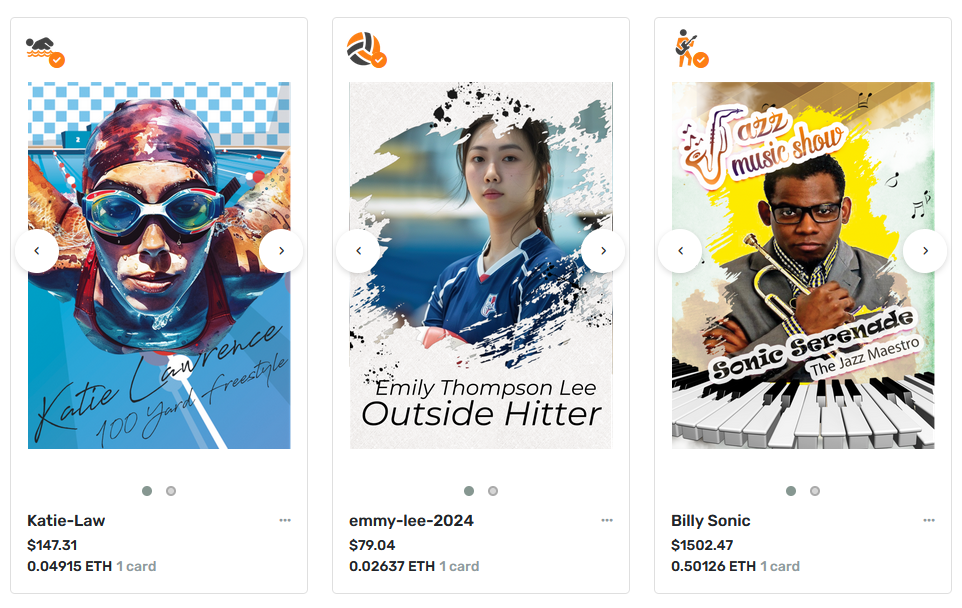The impact can be powerful.
When brands, athletes, and companies collaborate to create products, campaigns, or digital assets that feature both the brand and the athlete together, the impact can be powerful. This type of collaboration allows all parties to leverage their unique strengths, creating a synergy that benefits everyone involved. Here’s how this can work:

Mutual Benefits:
- Amplified Brand Messaging:
- Brands: Benefit from the athlete’s credibility and influence, aligning their brand message with the athlete’s persona and values, making the brand more relatable and aspirational.
- Athletes: Gain additional exposure through the brand’s marketing channels, reaching a wider audience and enhancing their public image.
- Companies: These entities, whether they are marketing agencies or tech platforms, facilitate the collaboration, often positioning themselves as industry leaders by successfully bringing these partnerships to life.
- Increased Fan Engagement:
- Collaborating on products or campaigns that feature both the brand and the athlete can create a deeper connection with fans. For example, fans of the athlete are more likely to engage with and purchase products associated with their favorite sports star, while brand loyalists may become new fans of the athlete.
- Creative and Authentic Storytelling:
- By working together, the brand and athlete can co-create a narrative that feels authentic and resonates deeply with the target audience. This can be particularly powerful in advertising campaigns, social media, and digital content.
- Exclusive and Limited-Edition Products:
- Brands can create limited-edition products or digital collectibles featuring the athlete, which can be highly desirable. This not only drives sales but also creates buzz and urgency around the brand.
- Shared Revenue Streams:
- Revenue from these collaborations can be shared among the brand, athlete, and the facilitating company. This includes sales, royalties from products, and additional income from merchandise or digital collectibles.
For Brands:
- Strengthened Brand Image:
- Partnering with a high-profile athlete can reinforce the brand’s image, associating it with the athlete’s qualities such as strength, perseverance, or style. For example, a sportswear brand might partner with a top athlete to emphasize its performance-oriented products.
- Expanded Market Reach:
- The athlete’s fan base may include demographics that the brand has not previously targeted. This partnership can help the brand expand into new markets and reach a broader audience.
- Increased Sales and Loyalty:
- Products co-branded with an athlete are often seen as more exclusive or desirable, leading to increased sales. Additionally, fans may develop a stronger loyalty to the brand due to the athlete’s endorsement.
For Athletes:
- Enhanced Personal Brand:
- Collaborating with a reputable brand can elevate an athlete’s personal brand, associating them with quality, innovation, or other positive attributes the brand represents. This can lead to further endorsement deals and business opportunities.
- Financial Benefits:
- Beyond the initial endorsement fee, athletes can negotiate a share of profits from co-branded products, creating a long-term revenue stream.
- Diversification:
- Athletes can diversify their income and public image by being associated with brands outside of their usual sports-related endorsements. For example, an athlete might partner with a luxury brand, thereby broadening their appeal.
For Companies (Platforms or Agencies):
- Positioning as Innovators:
- Companies that facilitate these collaborations can position themselves as innovators in the industry, attracting more clients and opportunities.
- Enhanced Portfolio:
- Successfully bringing together a brand and an athlete can add to the company’s portfolio of successful campaigns, attracting more business and raising its profile in the industry.
- Long-Term Partnerships:
- These collaborations often lead to long-term relationships with both the brand and the athlete, creating ongoing business opportunities.
Examples of Successful Collaborations:
- Nike & Michael Jordan (Air Jordan):
- The collaboration between Nike and Michael Jordan led to the creation of the Air Jordan brand, one of the most successful athlete-endorsed product lines in history. The brand became synonymous with both the athlete and Nike, creating a lasting legacy.
- Adidas & Lionel Messi:
- Adidas has leveraged Lionel Messi’s global appeal to promote its products. The partnership not only boosts Adidas’ sales but also reinforces Messi’s brand as a global sports icon.
- Under Armour & Dwayne “The Rock” Johnson:
- Under Armour’s collaboration with Dwayne Johnson resulted in the “Project Rock” collection, which includes apparel, footwear, and accessories. The partnership has been highly successful, with products selling out quickly and becoming fan favorites.
- Gatorade & Serena Williams:
- Gatorade has partnered with Serena Williams for various campaigns, combining the brand’s image of performance and hydration with Serena’s status as a tennis legend. This has strengthened Gatorade’s position in the sports drink market while enhancing Serena’s endorsement portfolio.
Conclusion:
When brands, athletes, and companies come together to create collaborative products or campaigns, the result is often greater than the sum of its parts. These partnerships can lead to increased brand visibility, enhanced athlete recognition, and new revenue streams for all parties involved. By aligning their goals and strengths, they can create highly successful and impactful collaborations that resonate with consumers and fans alike.

Leave a Reply